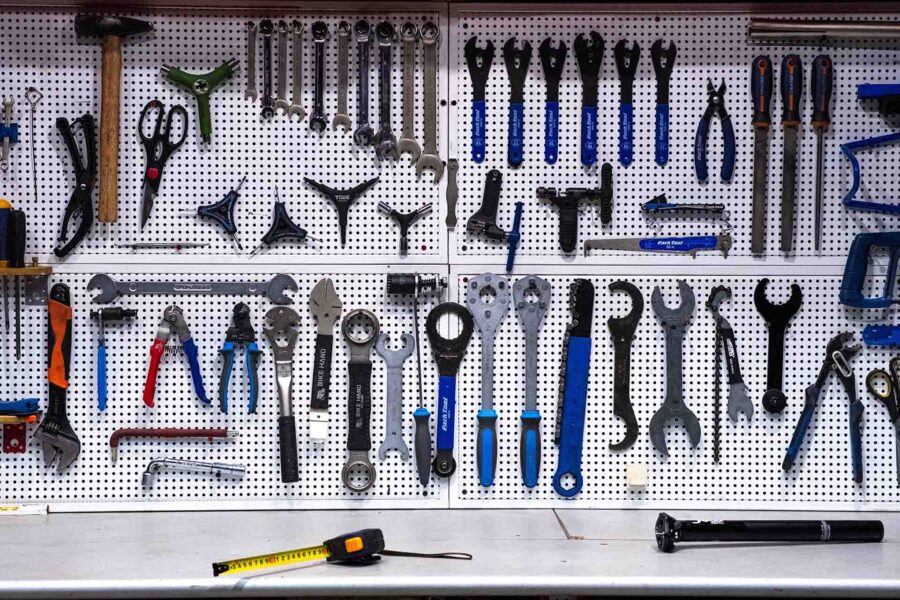

How to Move a Shed Across the Country – Your Complete Guide
Posted in How-to on January 23, 2024
Shipping a shed when moving cross country can seem like a complex task, but with the right approach and preparation, it’s entirely feasible. In this guide, we’ll explain how to move a shed from one location to another, regardless of distance. Whether you need to know how to move a small shed or a larger structure, we provide practical advice on planning, disassembling, transporting, and reassembling.
How to Move a Shed?
Preparing for relocation to a new state requires careful planning and execution. First, assess the shed’s size and material to determine if it can be moved whole or needs disassembly. For smaller sheds, you might use a large trailer or a relocation truck. Secure the structure properly to the vehicle to avoid any movement during transit. For larger structures, disassembling might be necessary. Label each part and take notes during disassembly for easier reassembly.
Hire long-distance movers for heavy or complex sheds. They have the right equipment and experience to handle such tasks and move safely whatever you want moved. Before the relocation, check local regulations and obtain necessary permits for moving sheds. Prepare the location in your new home, ensuring it is level and accessible. Finally, whether shipping in one piece or reassembling on site, ensure every part is secure and weatherproofed for longevity.
Preparing Your Shed for a Cross-Country Relocation
Preparing for a relocation is essential for a smooth transition, especially when you plan on shipping complex structures like sheds. Whether you’re wondering how to move a shed with pipes or how to move a shed on skids, the preparation steps are the same. Start by thoroughly cleaning the structure, removing all contents to lighten the load, and inspecting it for any damage. Secure loose parts like doors or shelves with bolts or straps to prevent movement during shipping to another state.
Disassembling Sheds for Moving – Usually a Necessary Step
If the structure is large or fragile, disassembling might be necessary. Carefully remove and label each part, such as the roof and doors, and document the process for easier reassembly. Safely disconnect and secure any electrical or plumbing fixtures. Check the shed’s base – if it’s not fixed to the ground, ensure it’s properly supported for lifting. If you’re not sure how to move a large shed, the best relocation tip we have would be to search “shed movers near me” and hire movers with the appropriate equipment and experience.

Choosing the Right Moving Method – Shed Relocation Services
When relocating sheds, you have several options – hiring professional movers (which most relocation experts would strongly recommend), doing it yourself (DIY), or utilizing specialized relocation companies. Professional movers offer expertise and equipment, making them a reliable choice for large or complex sheds. The downside is having higher relocation expenses.
DIY is better when it comes to shed moving costs. This option gives you full control over the process, but it will likely cause you plenty of relocation stress. It requires significant effort and poses risks if you lack experience or the right tools. Specialized relocation companies are experts in this niche, providing tailored services and guaranteeing shed transport safety. Their specialized equipment, like dollies, can handle various structure types and sizes.
Should You Use Other Cross-Country Moving Services?
For an efficient relocation, considering other cross-country moving services can be beneficial. These services often provide additional resources like packing assistance, storage, and transportation of your household items, offering a more integrated solution. They ensure that all your belongings are transported safely. Of course, balancing cost, convenience, and your specific needs is crucial in deciding whether to include other relocation services in your plan.

Obtaining Necessary Permits and Understanding Regulations
When planning to relocate sheds across state lines, it’s crucial to be aware of and comply with various regulations and requirements. Depending on where you currently live and the new destination, this process may involve:
- Researching state and local regulations – Each state and locality has its own set of rules governing the transportation of large structures. These can include restrictions on size, weight, and the time of day when shipping is permitted.
- Consulting local building authorities – They can provide specific guidelines and restrictions for transporting structures in your area.
- Checking state transportation departments – They offer information on state-specific regulations, such as highway restrictions and escort requirements for oversized loads.
- Understanding route limitations – Some roads may have height or weight limitations that could affect your shipping route.
- Obtaining the right permits – After understanding the regulations, the next step is to obtain the necessary permits.
- Applying for transportation permits – These are typically required for shipping oversized loads and must be acquired from state transportation departments.
- Securing local permits – Some localities might require additional permits, especially if structural changes are made to the shed.
Selecting a Route and Scheduling Cross-Country Shed Transport
Successfully transporting a shed across the country hinges on careful route selection and scheduling. When planning the route, it’s important to consider highway accessibility, especially for roads that can accommodate oversized loads and have minimal restrictions. Equally crucial is avoiding congested areas, as routes through less populated regions help minimize traffic delays. Additionally, choosing a path that offers the most direct access to the shed’s new location can significantly reduce transport time.
Traffic Conditions and Weather Considerations in Shed Moving
When transporting sheds over long distances, it’s vital to account for varying weather and traffic conditions. Keeping a close eye on weather forecasts along the route is essential, as adverse weather like heavy rain, snow, or high winds can impact both safety and travel time.
It’s also important to research traffic trends for the chosen route, planning to avoid major cities during rush hours and possibly opting for off-peak seasons to evade heavy traffic. Having contingency plans, such as alternative routes and schedules, is wise to adapt to any unforeseen weather or traffic issues. This thorough preparation ensures a more secure and efficient transportation process, reducing anxiety about relocating.

The Moving Day – What to Expect When Moving Large Structures Like Sheds
Relocating large items like sheds involves a detailed process. On the relocation day, the team starts with a final inspection to ensure the structure is ready and secured for transit. It’s then loaded onto the transport vehicle, often using specialized equipment for larger sheds. The transport follows a carefully planned route, with the team monitoring the structure’s stability and road conditions. Upon arrival, the structure is unloaded off the relocation truck, and if it’s disassembled, the reassembly process begins.
Tips for a Smooth Moving Day
For a smooth relocation day, ensure all preparations are complete and necessary permits are accessible. Maintain clear communication with the relocation team and keep an emergency contact list handy. Having a clear plan for the day, including the timing of each step, is vital. Be prepared for contingencies like weather changes or unexpected delays, and have a flexible mindset with a backup plan ready. Don’t worry – with good movers, it’ll all be stress-free!

Setting up Your Shed at the New Location
After the successful transportation of your shed to the new location, the final challenge is to set it up effectively. This process is crucial to ensure that your shed remains functional, safe, and durable in its new setting. Let’s take a look at what you need to do.
Preparing the New Site – What You Need to Know
The chosen location should be easily accessible, level, and free from drainage problems. It’s important to ensure that the ground is stable enough to support the structure without any risk of sinking or shifting. Clearing the area of debris and vegetation is also essential to provide a clean and safe environment for installation.
The foundation plays a vital role in the longevity of the structure. Depending on the size and type, various foundation options can be considered, such as concrete slabs, gravel beds, or even specialized shed foundations. Ensuring a solid and level foundation will prevent future structural issues.
Last Step – Reassembling Sheds at the Destination
If your shed was disassembled, reassembling it is the final step. This should be done with care, following any notes or photographs taken during the disassembly. Each part should be checked for damage before you secure the shed on the new site. If electrical or plumbing systems were a part of the structure, professional assistance might be necessary for reinstallation.
After reassembly, it’s crucial to conduct a thorough inspection. Check for any loose components, ensure doors and windows function correctly, and apply any necessary weatherproofing treatments. This ensures that the structure is not only reassembled but also restored to its full functionality and prepared to withstand the new environment.
Finally, personalizing the shed to fit into its new surroundings can make it feel like a seamless part of your new house. Whether it’s through painting, landscaping, or adding decorative elements, these finishing touches will make your shed aesthetically pleasing.

Contact Cross Country Movers – Our Professional Shed Movers Can Help You Out
If you’re facing the challenge of moving across the country, our team at Cross Country Movers is here to assist. Specializing in the transportation of large structures, our professional movers are equipped with the expertise and equipment needed for a seamless move. We understand the complexities involved in relocating sheds of all sizes and types.
Backed by our commitment to excellence and customer satisfaction, our long-distance moving services are tailored to ensure your belongings are moved safely, efficiently, and with the utmost care. Contact us today to discuss your needs, and let us help you with a stress-free relocation experience.
How Much Does It Cost to Move a Shed Across the Country?
The cost of relocating such structures across the country varies depending on factors such as the size of the sheds, distance of the move, and specific requirements like disassembly and reassembly. Smaller sheds may cost less to transport, while larger, more complex structures require more resources and thus incur higher costs. Obtaining quotes from several relocation companies can provide a clearer picture of the expected expenses.
Can All Sheds Be Moved, or Are There Restrictions?
Not all sheds can be moved, as there are restrictions based on size, material, and condition. Smaller, modular sheds are typically easier to transport. However, large sheds or those made from fragile materials may pose challenges. The structure’s condition is also crucial – those in poor condition might not withstand the rigors of a long-distance relocation. It’s important to consult with professional movers to assess the feasibility of shipping a specific shed.
How Long Does It Take To Move a Shed Across the Country?
The time it takes to ship sheds across the country depends on factors like the distance, route, and preparation time. Typically, the transportation itself can take up to a couple of weeks. Additional time for preparation, such as obtaining permits and scheduling, should also be considered. Disassembly and reassembly can add to the overall relocation time.
What Should I Do if My Shed Is Damaged During the Move?
Immediately document the damage with photographs and report it to the relocation company. Check your contract for insurance and liability clauses to understand the coverage for damages. It’s advisable to have shed moving insurance in place before the relocation to protect against such incidents. Contact your insurance provider to file a claim if necessary and discuss your options with the relocation company.







